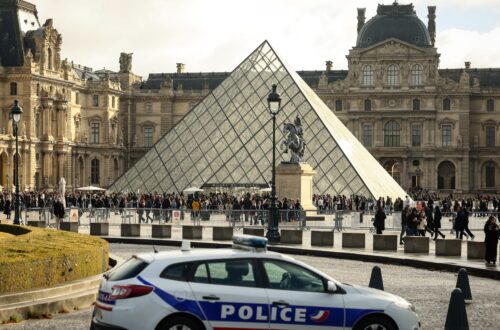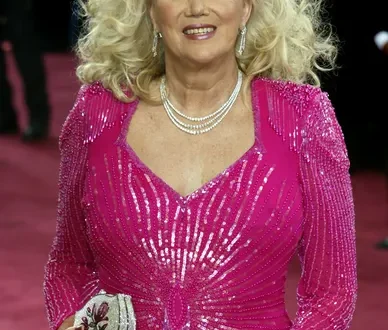Robert Redford, the golden-haired leading man who became an Oscar-winning director, a tireless environmental advocate, and the founder of Sundance, has died at 89 at his home in Utah. His passing marks the end of an era in American cinema, a career that bridged Old Hollywood charm with the restless energy of the New Hollywood generation and left behind both a filmography and an institution that continue to shape the art form.
Redford emerged in the 1960s with striking looks and a natural screen presence that seemed at once effortless and deeply considered. His breakout role opposite Paul Newman in “Butch Cassidy and the Sundance Kid” in 1969 gave him the kind of stardom that could define a career. Yet Redford was restless, unwilling to settle for being just another matinee idol. The early 1970s found him starring in a string of films that reflected the turbulence of the times: “The Candidate” took aim at political cynicism, “Three Days of the Condor” captured the era’s paranoia, and “All the President’s Men” dramatized the courage of journalism in the Watergate age. Alongside these, his role in “The Way We Were” opposite Barbra Streisand revealed a romantic vulnerability that audiences never forgot.
It was in these years that Redford perfected the image of the thinking person’s movie star. He had the good looks that filled magazine covers, but his characters often carried a quiet self-doubt, a moral unease, or a refusal to take the easy way out. He wasn’t merely a man of action or romance; he was the man who paused before speaking, who let audiences see the conflict beneath the surface. With Streisand in “The Way We Were,” that quality created one of the most memorable screen pairings of the decade, his golden reticence sparking against her fiery conviction.
Redford’s ambitions eventually pulled him behind the camera. His directorial debut, “Ordinary People,” in 1980 stunned Hollywood: a delicate family drama about grief and repression, it won the Academy Award for Best Picture and brought Redford the directing Oscar. The film signaled that the actor known for his looks and charm also possessed a meticulous eye for character and a profound patience with the quieter rhythms of storytelling. He went on to direct films such as “A River Runs Through It” and “Quiz Show,” each carefully crafted and deeply humane.
Yet his most lasting directorial project wasn’t a film but a movement. In 1981, he founded the Sundance Institute in the mountains of Utah, a retreat for filmmakers who needed space to hone their craft outside the glare of the studio system. The Sundance Film Festival soon followed, and by the 1990s it had become the premier showcase for independent film in America. Careers were launched there, voices that otherwise might have been ignored found platforms, and the industry itself was forced to reckon with a generation of storytellers nurtured under Redford’s vision. Sundance transformed the way films were discovered, distributed, and celebrated, and its influence continues to echo across world cinema.
Redford’s commitment to causes extended beyond film. A lifelong advocate for the environment, he used his fame and resources to fight for clean air, public lands, and wildlife protection. He was one of the first stars to use his celebrity consistently and visibly for environmental activism, long before such causes were fashionable. His love for the American West was more than an aesthetic preference; it was a moral and ecological one. He lived much of his later life in Utah, embodying a commitment to stewardship and sustainability that matched his artistic endeavors.
Awards accumulated as naturally as his influence: an Oscar for directing, an honorary Academy Award for his contributions to film, Kennedy Center Honors, the Presidential Medal of Freedom. But he always seemed slightly uncomfortable with accolades, preferring to talk about projects, people, and places rather than his own achievements. The measure of his career lies not just in the trophies on his shelf but in the opportunities he created for others.
Redford was born Charles Robert Redford Jr. in Santa Monica in 1936. A onetime art student who wandered through Europe before finding his way to acting, he brought to Hollywood a bohemian streak tempered by discipline. He appeared first on stage and television, slowly building toward film roles that revealed his ability to balance charm with complexity. What followed was a career that stretched across six decades, spanning thrillers, romances, political dramas, intimate indies, and survival tales. Even late in life, he challenged himself, most memorably in “All Is Lost,” a nearly wordless one-man film about endurance and solitude at sea. It was a performance that distilled his essence: resilient, reserved, unshowy, and unforgettable.
For many who loved his work, the lasting images will be of Redford as a man caught between choices. The journalist in “All the President’s Men” hunched over a typewriter as history unfolds. The fugitive spy in “Three Days of the Condor,” running through rain-slicked streets, eyes darting with suspicion. The golden-haired college man in “The Way We Were,” holding Barbra Streisand close even as ideology and temperament keep them apart. These roles gave audiences not just entertainment but reflections of themselves, reminders that beauty and doubt, privilege and responsibility, can reside in the same figure.
Robert Redford leaves behind a family, a festival, an institute, and a body of work that continues to inspire. But perhaps his greatest gift was showing that celebrity could be used to build something larger than the self. He built Sundance, he built communities of artists, he built bridges between commercial success and personal vision. For decades, he represented an ideal that stardom and seriousness need not be opposites. His absence leaves a void, but his legacy is everywhere: in the films we watch, the festivals we attend, and the belief that movies, like mountains, deserve to be preserved and passed on.




